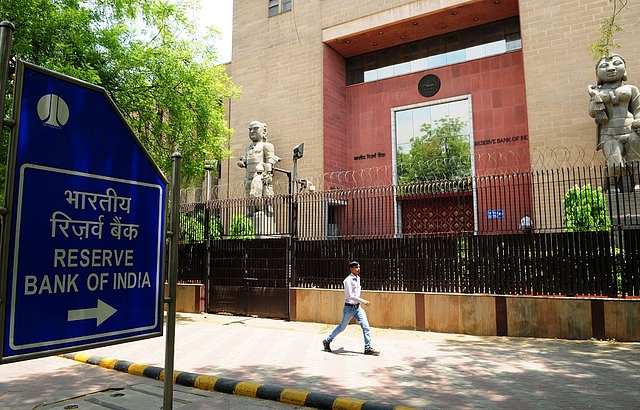
MPC Must Pick Up A Hint Or Two From US Fed And Slash Rates, CRR In April
The MPC needs to look beyond its narrow inflation mandate. The fact that the US Fed is dovish on rates means the MPC itself has headroom to cut rates a lot more.
The US Federal Reserve’s U-turn on monetary policy at its meeting on 20 March stands in sharp contrast to the mulish behaviour of India’s own Monetary Policy Committee (MPC) which, till last month, was stuck on fighting inflation when it has been consistently wrong on its inflation forecasts.
Despite a strong labour market, the Federal Reserve Open Market Committee (FOMC) clutched at the straw of weakening “economic activity” and lower inflation (due to weaker energy prices), to maintain its target rate at 2.25-2.5 per cent. Translated, this means there will be practically no rate hike in 2019, and possibly only one in 2020.
What this shows is that the US economy will have the benefit of an enabling monetary policy environment, now that the fiscal stimulus-driven growth boost given by Donald Trump’s tax cuts is petering out.
Consider this positive attitude to monetary responsibility, where the Fed feels duty-bound to boost employment and growth as long as inflation is in control, with our own MPC’s cussed obsession with non-existent inflation, never mind what happens to the economy.
In February, exactly two years after wrongly shifting the monetary stance to neutral from accommodative post-demonetisation, the MPC shifted back to neutral from “calibrated tightening” after the bottom fell of retail inflation.
But what we got was a timid 0.25 per cent rate cut, which too will not be substantially passed on by banks struggling to get profitability up in a situation where demand for loans is rising, but deposit growth has been less robust. Year-on-year growth in deposits in 2019 (as on 1 March) has been 9.8 per cent while credit has zoomed 14.6 per cent.
And all this has been happening with low inflation (the February retail number was 2.57 per cent, well below the mid-range inflation target of 4 per cent), and weakening growth impulses (GDP down to 6.6 per cent in December quarter, and the Index of Industrial Production down to 1.7 per cent in January 2019).
That it took a new Reserve Bank Governor and a pretty lousy record of inflation forecasting for over two years to even bring down the rate by 0.25 per cent tells you one of two things: the MPC is still trying too hard to prove its anti-inflation credentials, and two, the inflation-targeting exercise needs to be balanced with a specific growth target too. An explicit inflation target with a vague growth mandate means the MPC will overshoot in the direction of disinflation or even deflation. This is not what monetary policy is supposed to do. The MPC cannot be an enemy of economic growth.
At the last MPC meeting in February, the committee “revised the path of CPI inflation downwards to 2.8 per cent in Q4 2018-19, 3.2-3.4 per cent in H1 2019-20 and 3.9 per cent in Q3 2019-20, with risks broadly balanced around the central trajectory. GDP growth for 2019-20 is projected at 7.4 per cent – in the range of 7.2-7.4 per cent in H1, and 7.5 per cent in Q3 – with risks evenly balanced.”
Now, assuming the MPC has not again got its inflation forecasts wrong (the growth target already looks shaky), the statement above clearly shows that retail inflation won’t hit the mid-range mark of 4 per cent at least till December 2019. And even after that, in case inflation threatens to go out of control, the MPC has time on its side.
Under the terms of the inflation-targeting agreement signed with the government in 2016, “if the average inflation is more than the upper tolerance level of 4 percent plus two percent, that is six percent…for any three consecutive quarters, it would mean a failure to achieve the inflation target. Where RBI fails to meet the inflation target, in terms of the provisions of RBI Act, it shall set out a report to the Central Government stating the reasons for failure to achieve the inflation target; remedial actions proposed to be taken by RBI; and an estimate of the time-period within which the inflation target shall be achieved pursuant to timely implementation of proposed remedial actions.”
This part of the agreement suggests that the RBI has at least nine months in which it can try to bring inflation down to below 6 per cent, and even after that, the government may allow it more time to achieve the goal.
No government will escape blame for high inflation even if it is the RBI and the MPC that failed. Put simply, the price to be paid for non-performance by the MPC is reputational, while for the government the political price will invariably be high. Despite the inflation mandate, this is a deal where power and responsibility are lopsided. In this context, for the MPC to bury its head in sand is actually irresponsible.
At its next meeting from 2-4 April, the MPC needs to get bolder and cut the repo rate by 0.5 per cent, or do a combo by cutting the rate by 0.25 per cent and release impounded cash reserve ratio (CRR) to the extent of 0.5 per cent of demand and time liabilities. CRR is banks’ biggest NPA – an asset that earns no interest.
It is high time the MPC started taking growth seriously, and any cut in rates and CRR will seriously help in two areas: improving banks’ balance-sheets and valuations, and improving credit offtake and the investment cycle.
The MPC needs to look beyond its narrow inflation mandate. The fact that the US Fed is dovish on rates means the MPC itself has headroom to cut rates a lot more.